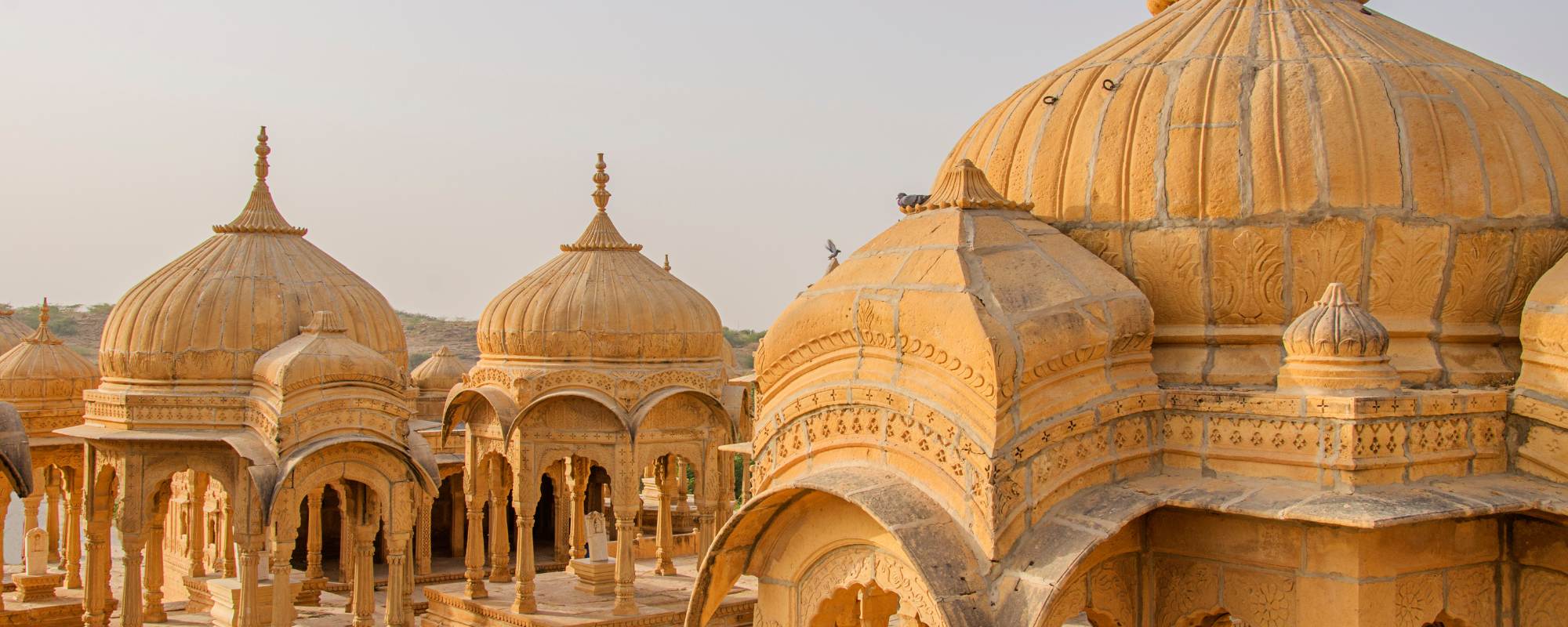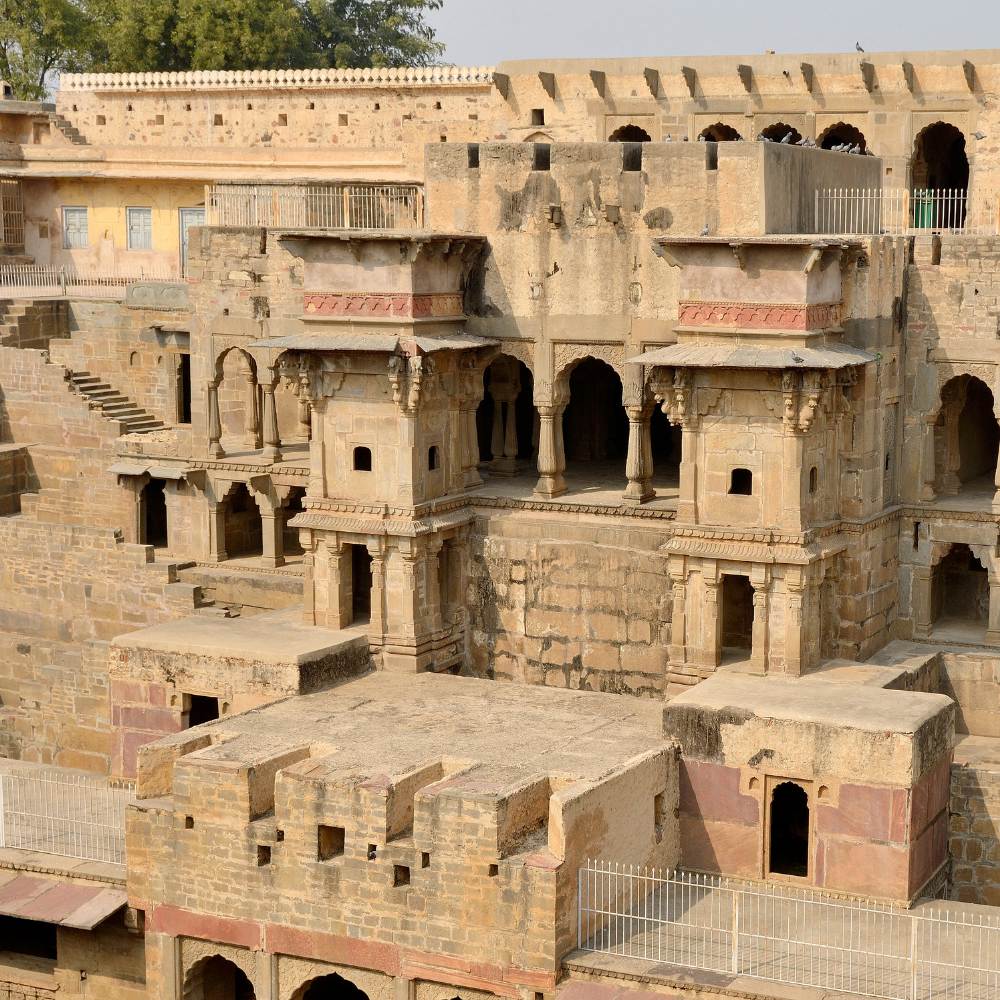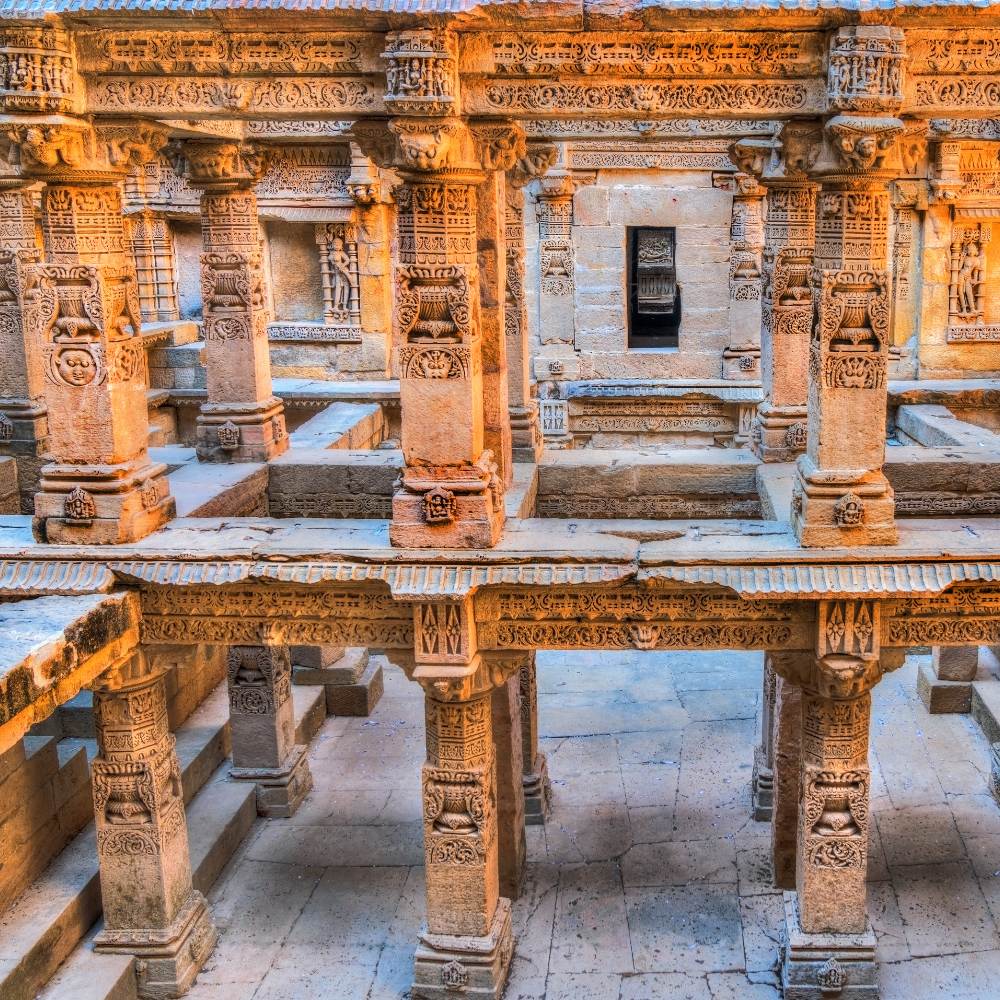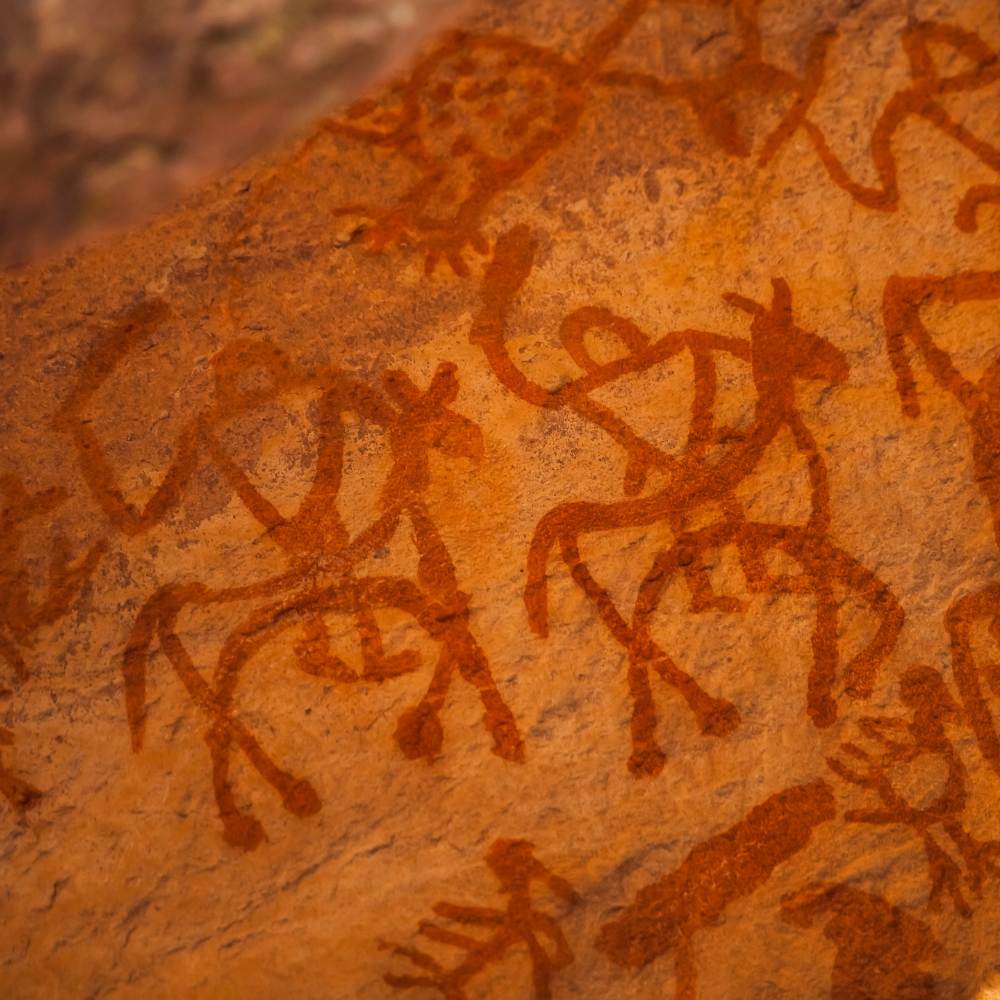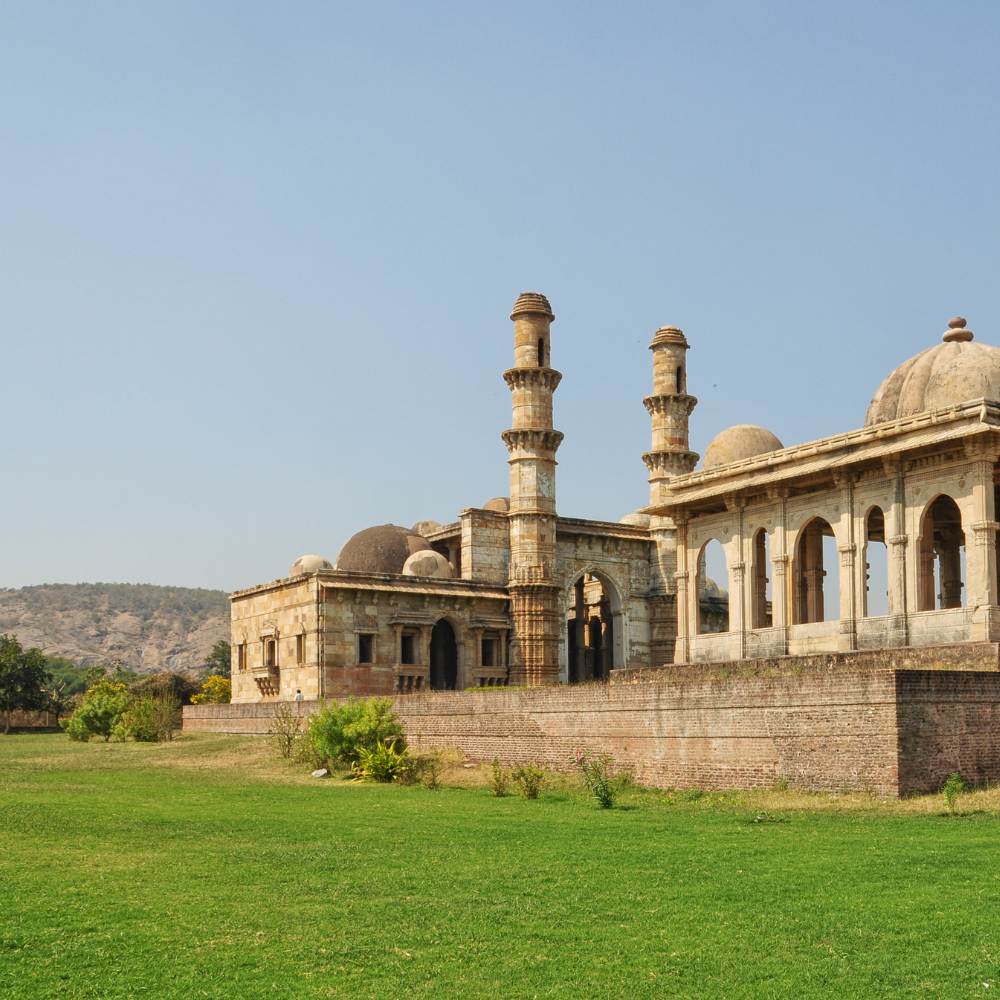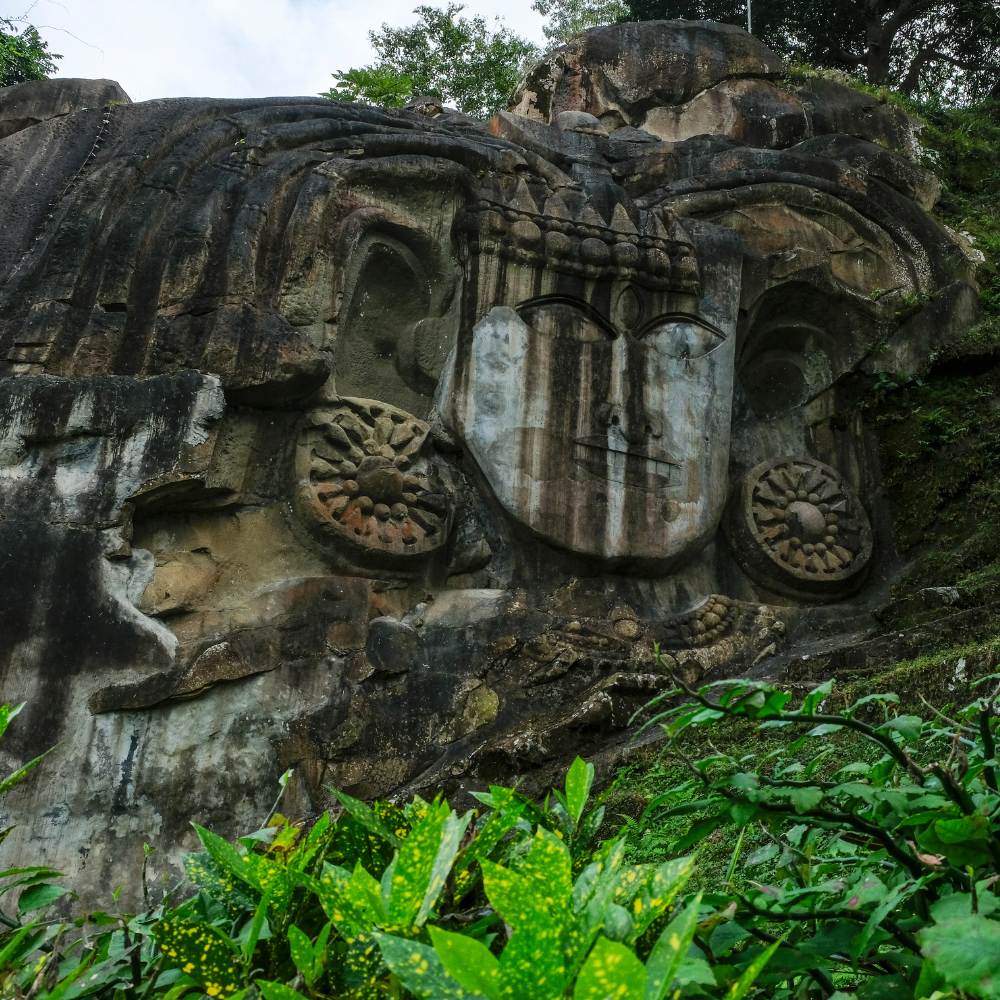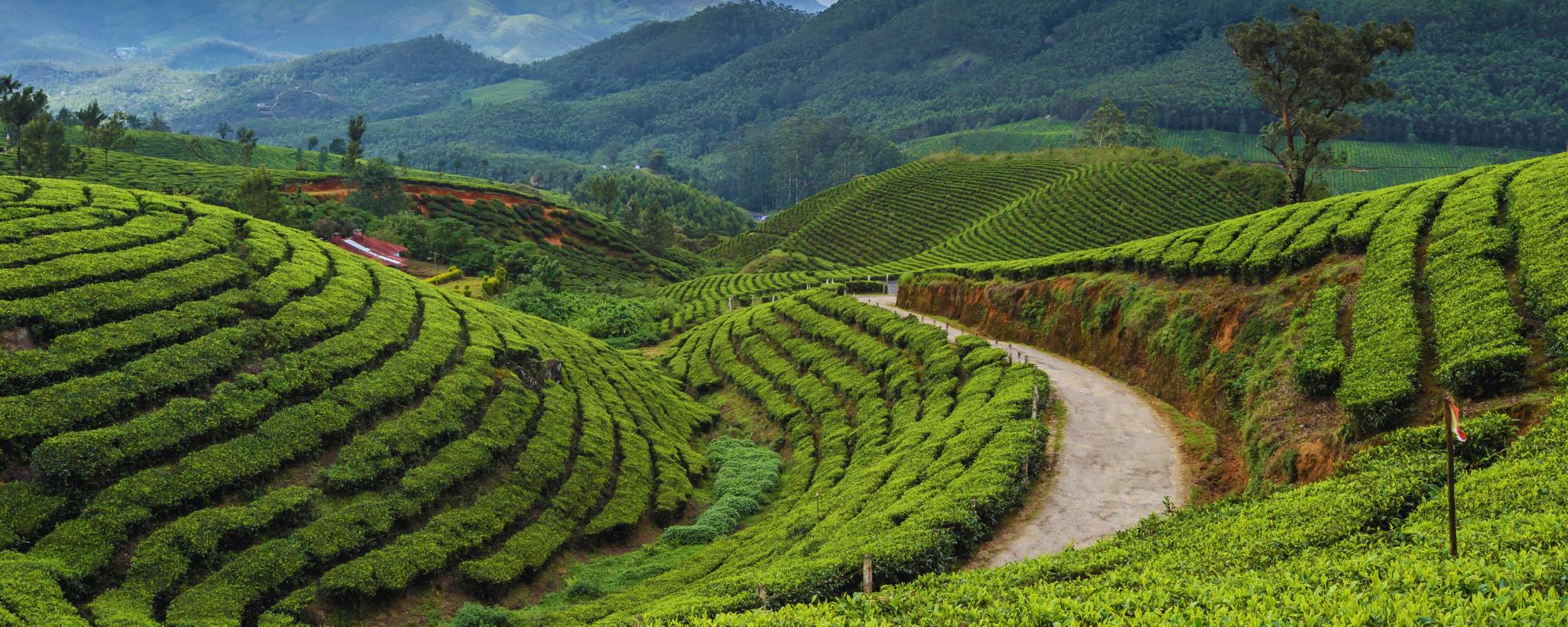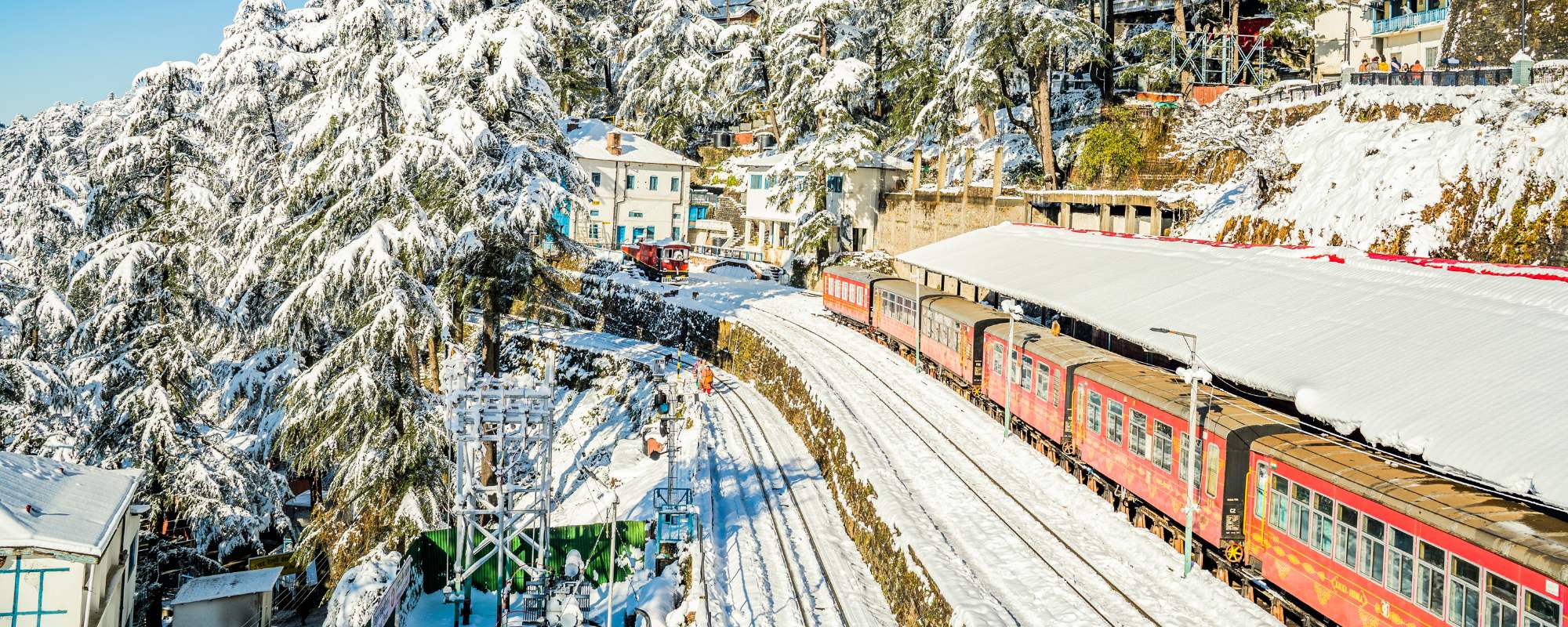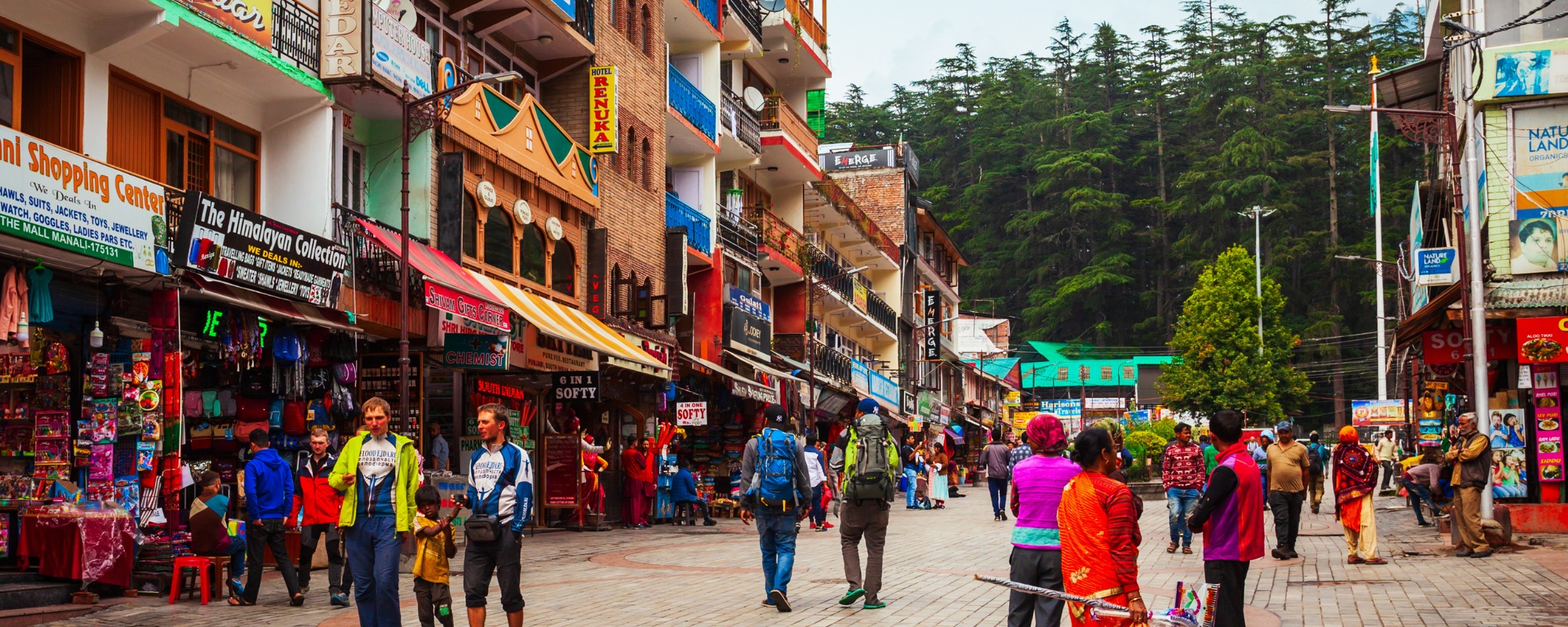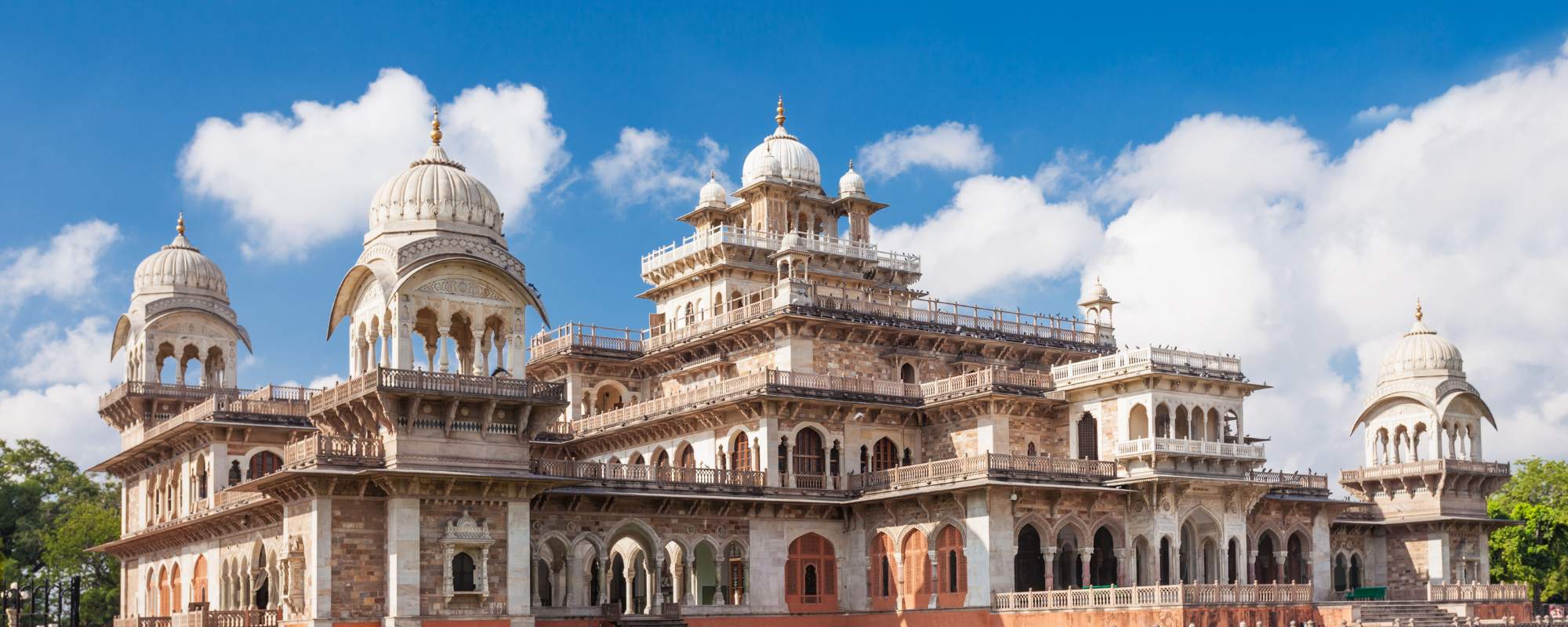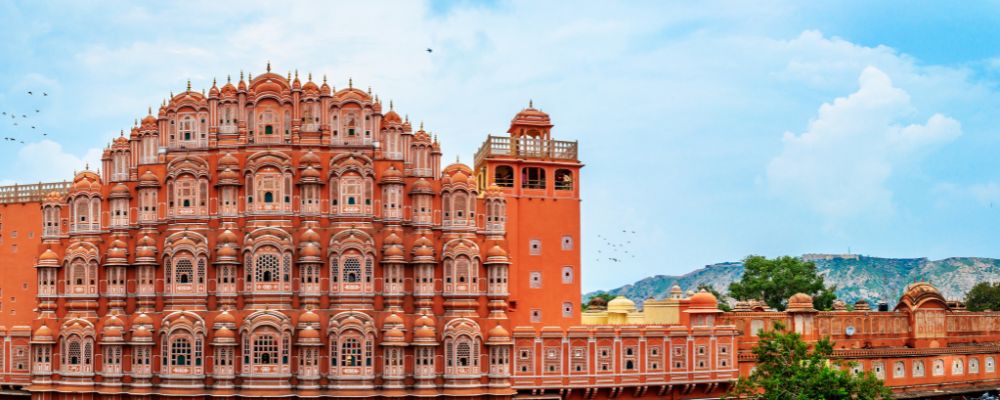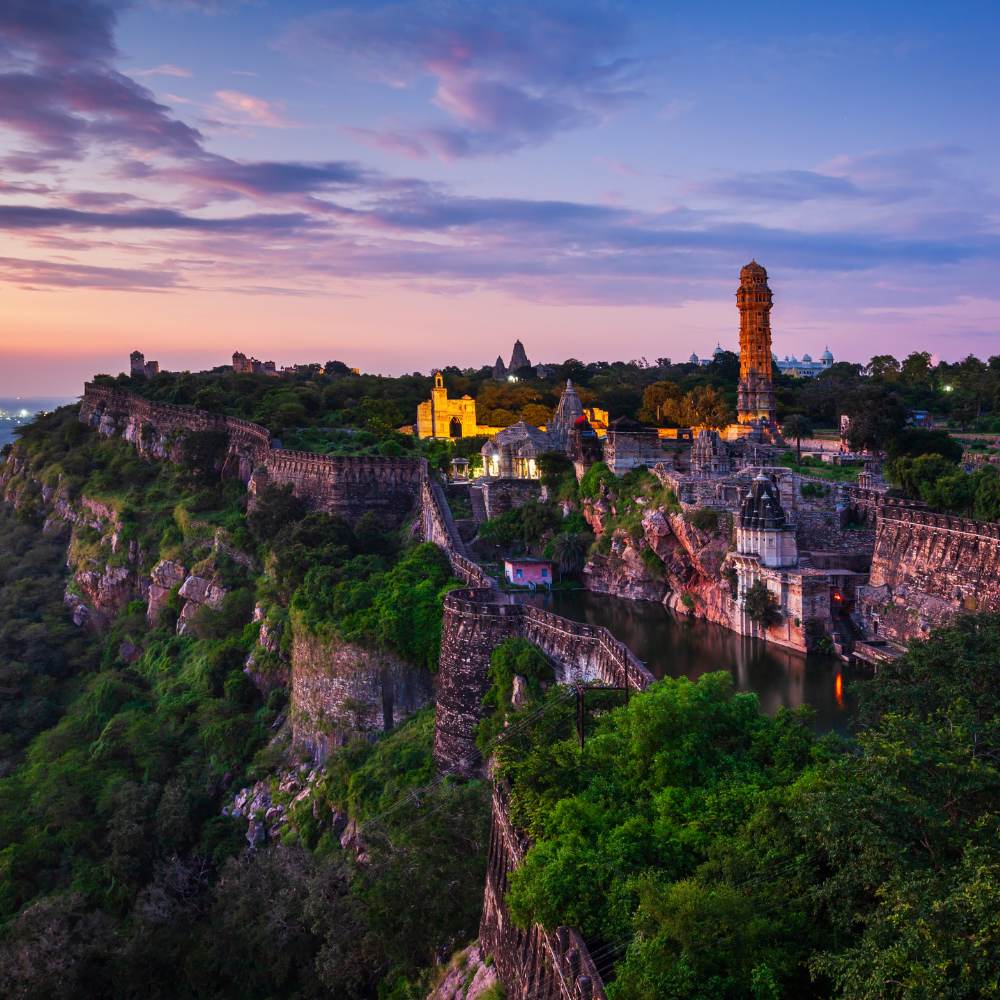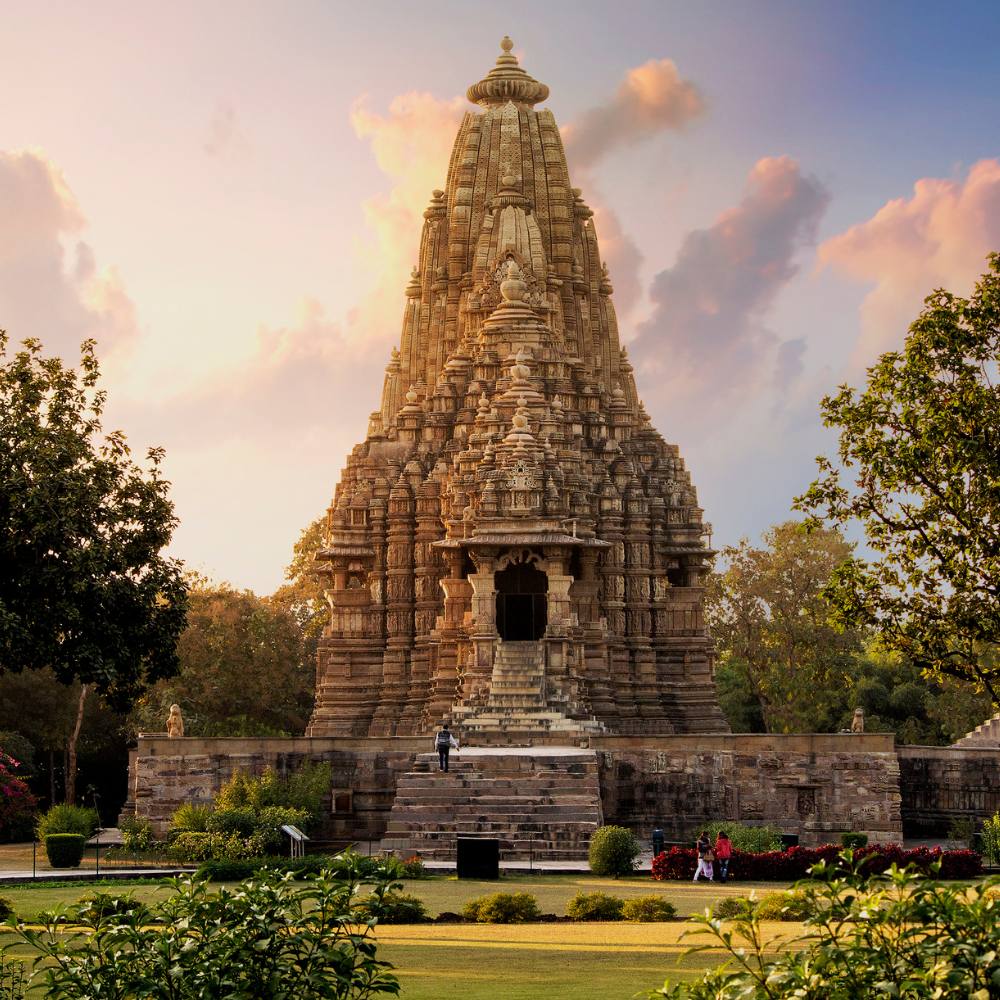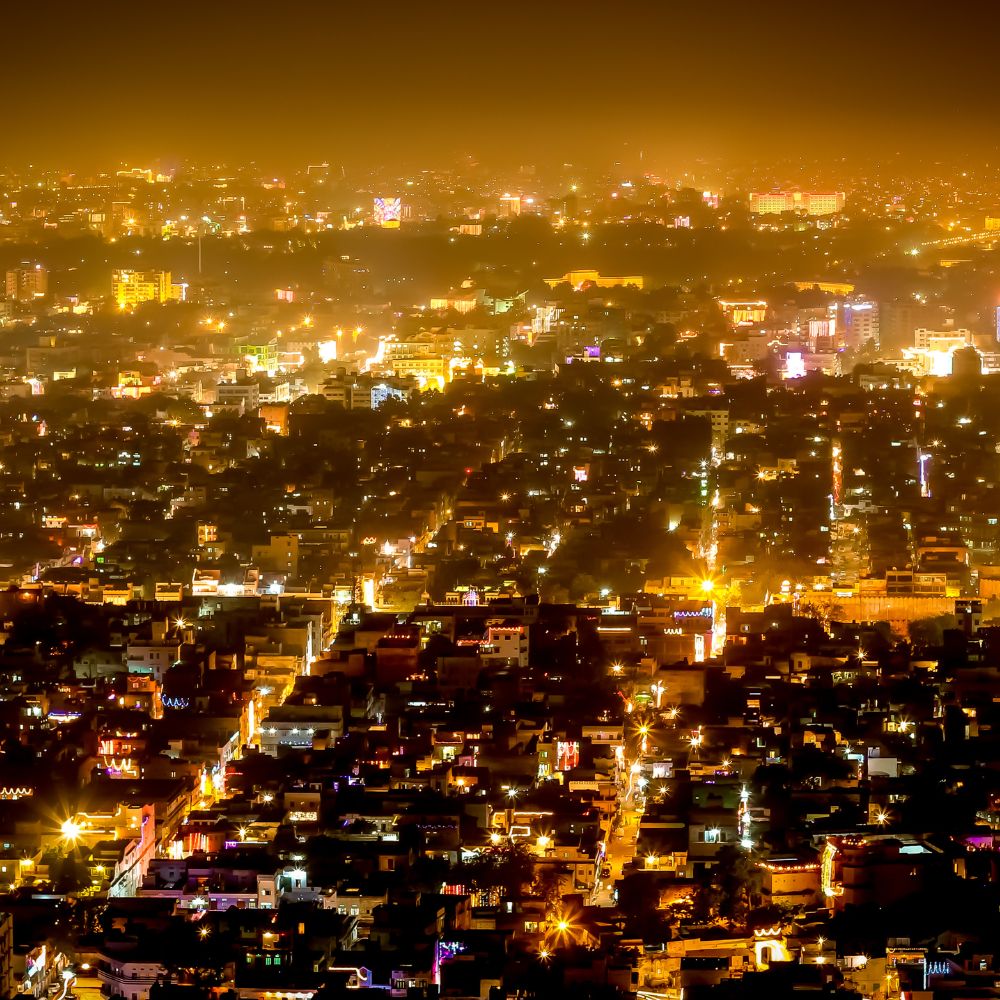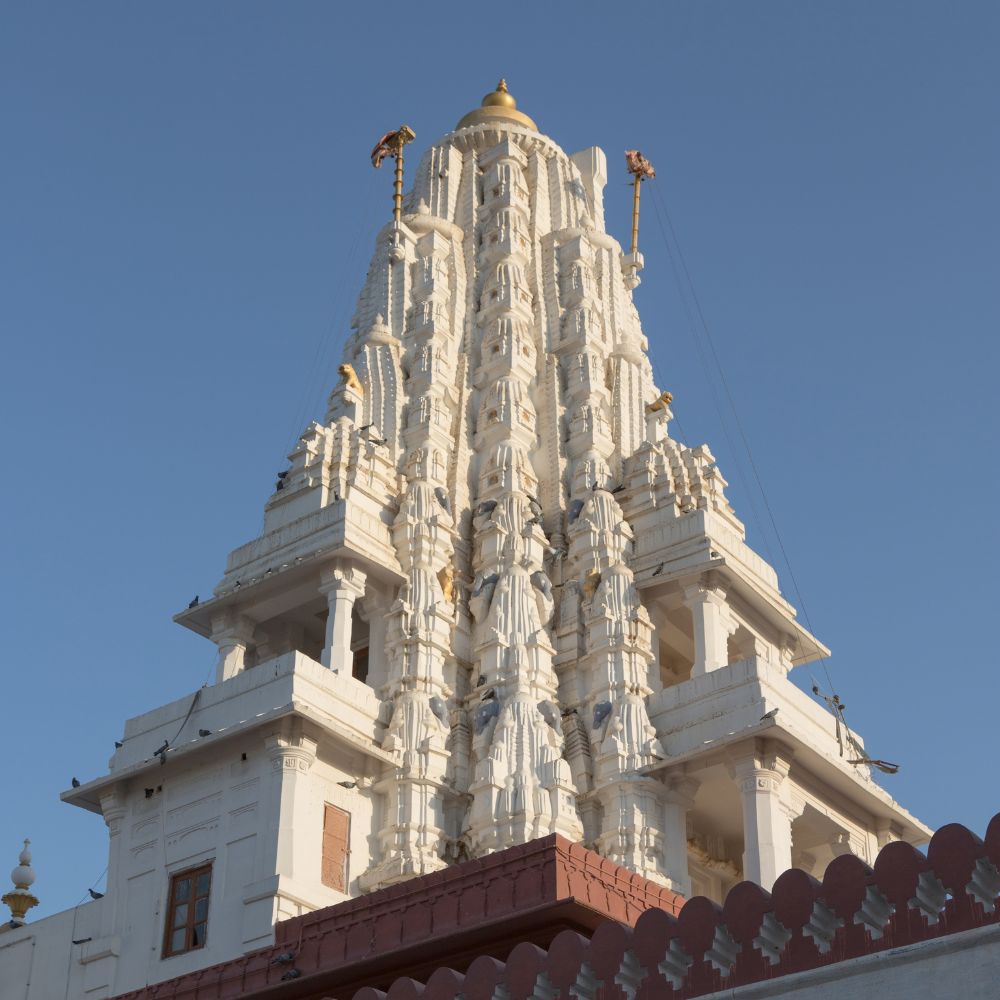India is a treasure trove of history and culture, home to numerous magnificent monuments that tell the stories of its past. While iconic landmarks like the Taj Mahal often steal the spotlight, many lesser-known historical sites deserve recognition for their unique architectural beauty and rich narratives.
From ancient rock shelters to splendid step-wells, this blog takes you through fourteen remarkable destinations that reflect India's diverse heritage. Each site, steeped in history, offers a glimpse into the craftsmanship and artistry of bygone eras.
Kanch Mahal, Agra
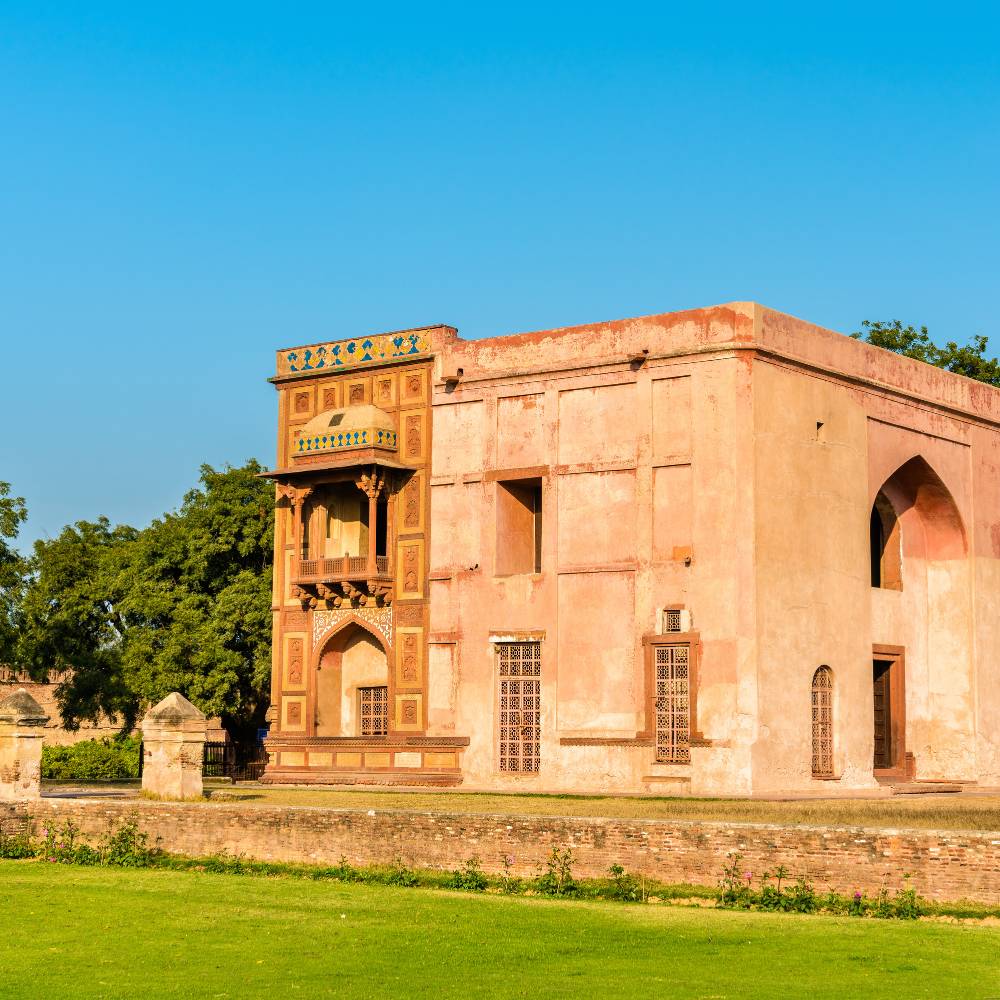
Nestled within the historic Fatehpur Sikri complex, Kanch Mahal is a stunning example of Mughal architecture, showcasing intricate tile work and elegant design. Constructed during the reign of Emperor Jahangir from 1605 to 1619, this palace served as a retreat for royal women. The façade, adorned with beautiful motifs, reflects the artistic finesse of its time. Despite its proximity to the famous Taj Mahal, Kanch Mahal often goes unnoticed. Yet, it offers a tranquil escape into the architectural glory of the Mughal era.
- Built Year: 1605-1619
- Style: Mughal Architecture
- Material: Red Stone and Plaster
Champaner-Pavagadh Archaeological Park, Gujarat
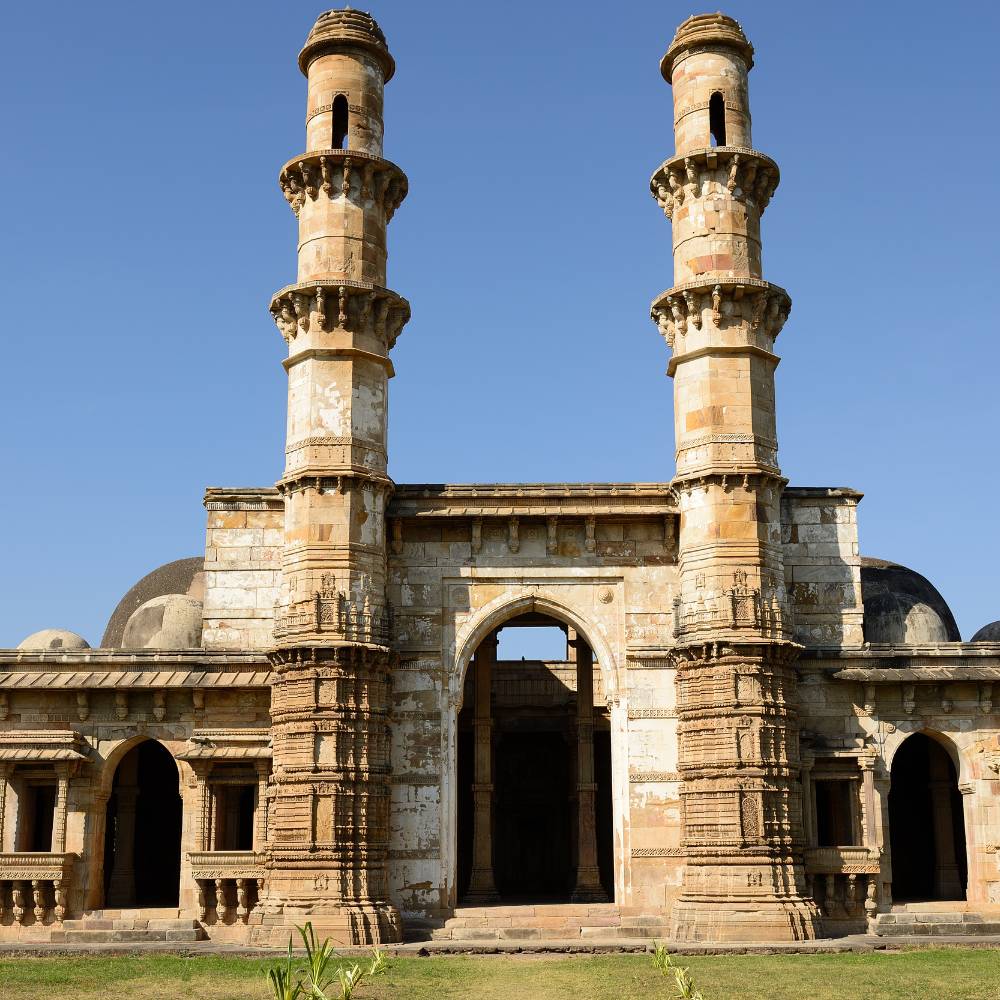
A UNESCO World Heritage Site, Champaner-Pavagadh Archaeological Park is a fascinating blend of Hindu and Islamic architectural styles. Located at the foothills of Pavagadh Hill, the site features a range of structures, including temples, mosques, and fortifications dating back to the 15th Century. The park's crown jewel, the Jama Masjid, stands out for its impressive design, featuring intricate carvings and grand arches. The park's rich history and stunning landscapes make it a hidden treasure for history enthusiasts and nature lovers.
- Built Year: 15th Century
- Style: Islamic and Hindu Architecture
- Material: Stone and Brick
Rock Shelters at Bhimbetka
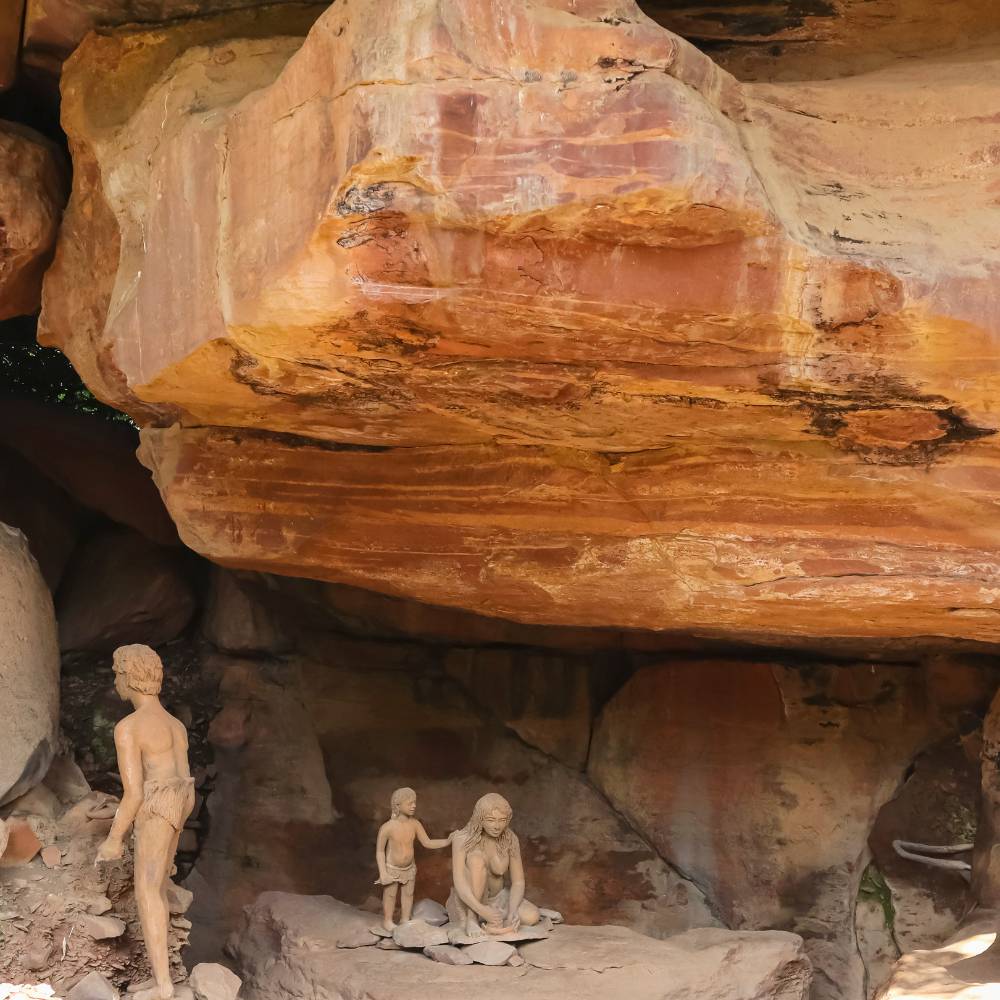
The Rock Shelters of Bhimbetka, situated in Madhya Pradesh, are a remarkable testament to prehistoric human life in India. These caves, dating back to the Paleolithic era, are adorned with ancient rock paintings that depict hunting scenes, animals, and the daily life of early humans. A UNESCO World Heritage Site, Bhimbetka offers a unique glimpse into the evolution of human culture over thousands of years. The paintings' vibrant colours and intricate details serve as a visual narrative of our ancestors' lives and beliefs.
- Built Year: Paleolithic Era
- Style: Prehistoric Rock Art
- Material: Natural Rock
Rani Ki Vav, Gujarat
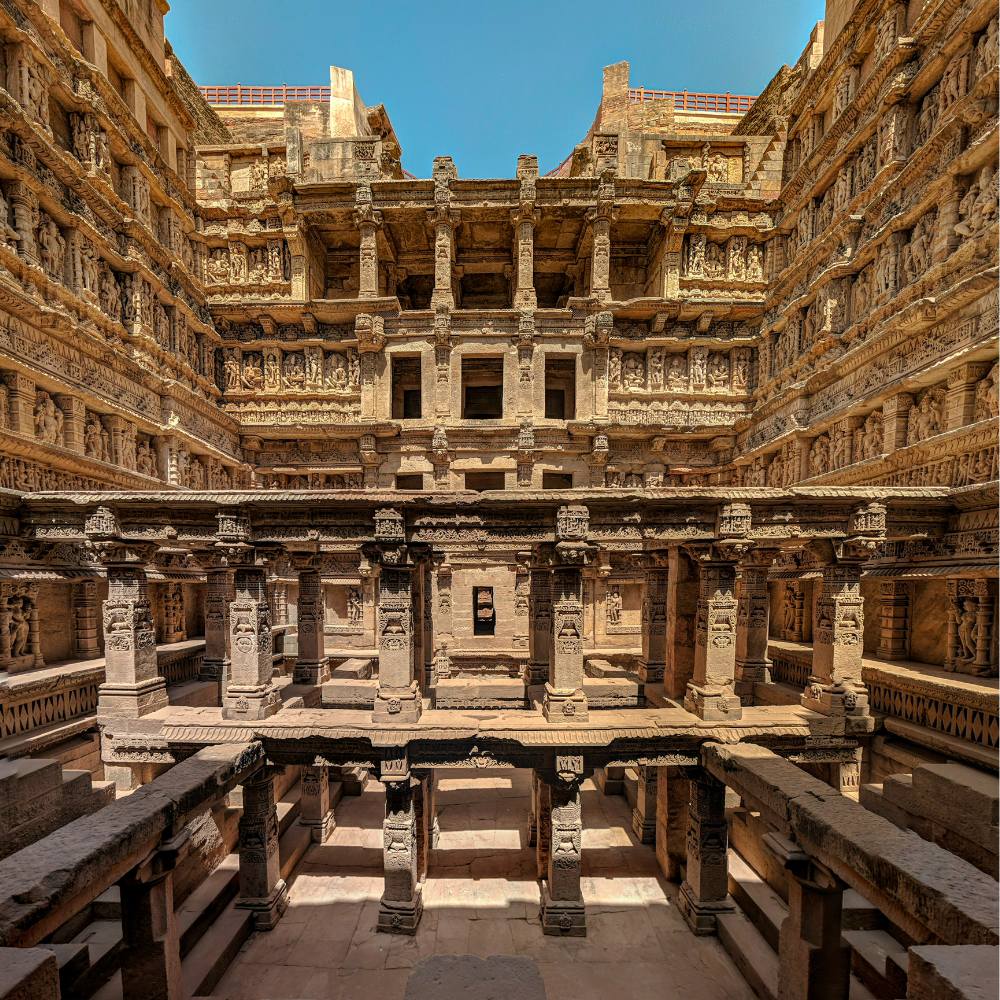
Rani Ki Vav, located in Patan, Gujarat, is a stepwell that exemplifies the grandeur of medieval Indian architecture. Built in the 11th Century by Queen Udayamati in memory of her husband, the stepwell features intricate carvings and sculptures depicting various deities, celestial nymphs, and mythological figures. The architectural brilliance of Rani Ki Vav lies in its symmetrical design and elaborate stonework. The well served the practical purpose of water storage. It acted as a place of worship and a retreat for the royal family.
- Built Year: 11th Century
- Style: Solanki Architecture
- Material: Sandstone
Belur & Halebidu, Karnataka
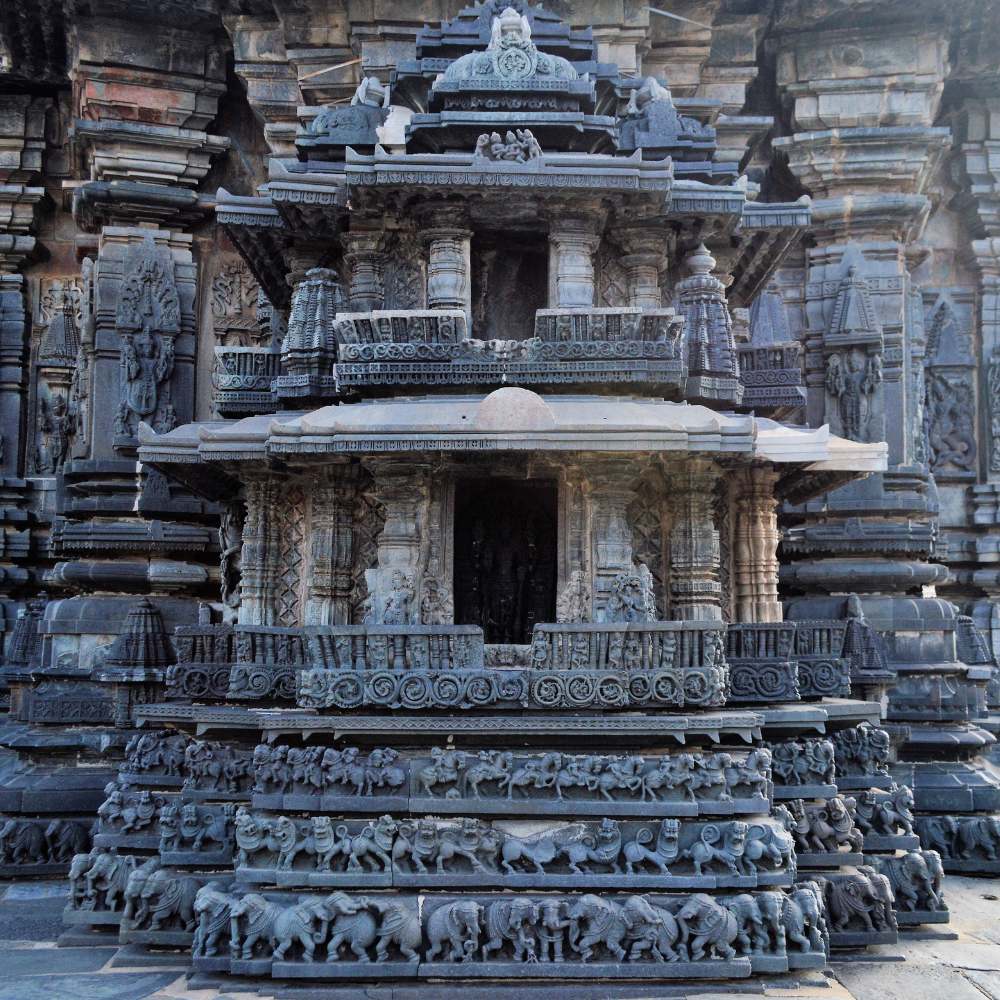
The twin towns of Belur and Halebidu are renowned for their exquisite temples, which showcase the richness of Hoysala architecture. Belur's Chennakeshava Temple, built in the 12th Century, is a masterpiece of intricate carvings depicting scenes from Hindu epics and celestial beings. Similarly, Halebidu's Hoysaleswara Temple boasts magnificent sculptures that narrate the grandeur of the Hoysala dynasty. The attention to detail in the stonework and the unique star-shaped bases of the temples exemplify the artistic brilliance of the period.
- Built Year: 12th Century
- Style: Hoysala Architecture
- Material: Soapstone
Bada Bagh, Jaisalmer
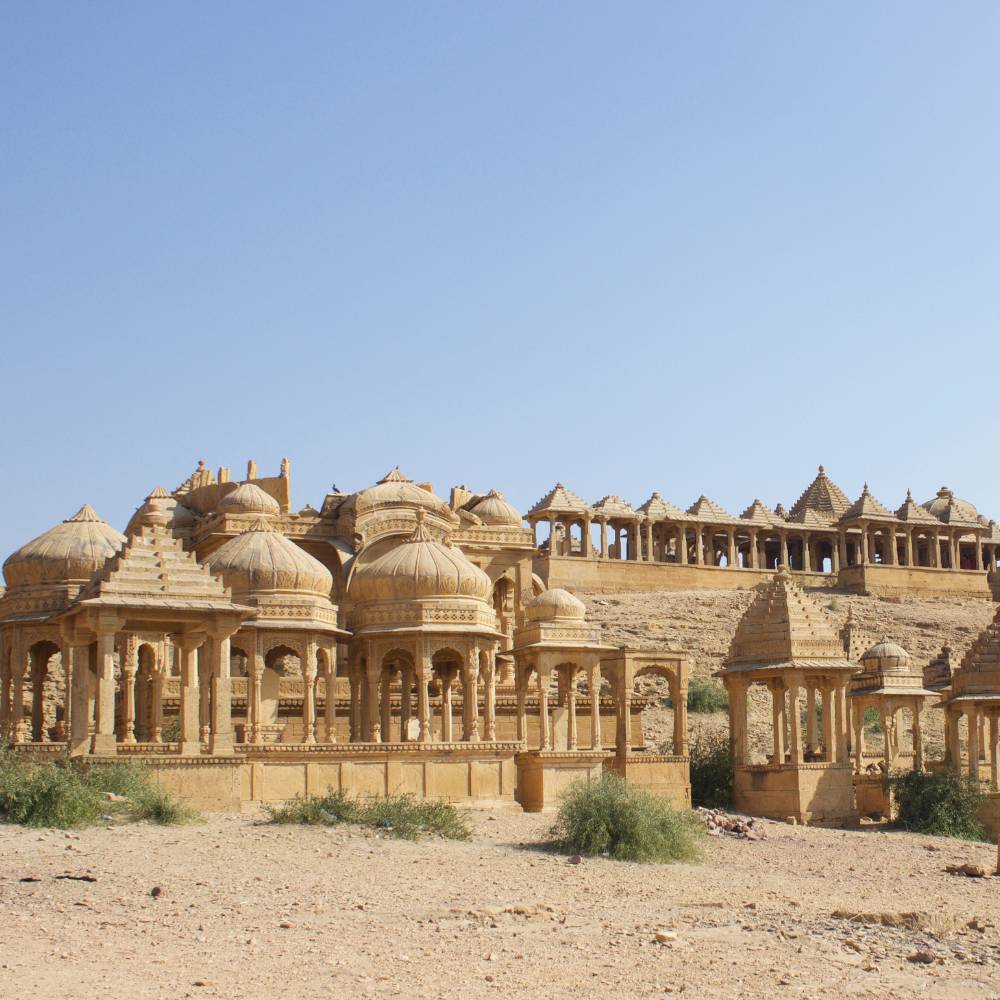
Bada Bagh, located just outside Jaisalmer, is an enchanting site filled with royal cenotaphs. Originally built as a reservoir in 1743, it became a memorial site for the Maharajas of Jaisalmer. The cenotaphs, made of yellow sandstone, feature intricate carvings and chhatris (domed canopies), reflecting the architectural style of Rajasthan. The picturesque backdrop of the Thar Desert adds to the allure of Bada Bagh, making it a serene spot for visitors to admire the artistry and history of the region.
- Built Year: 1743
- Style: Rajasthani Architecture
- Material: Sandstone
Musa Bagh, Lucknow
Musa Bagh, often overshadowed by Lucknow's more famous sites, is a citadel Nawab Saadat Ali Khan built for royal leisure. Constructed in the early 19th Century, this retreat was once surrounded by magnificent gardens, but remnants still hint at its former grandeur. Today, the dilapidated structures and sunken gardens tell a story of neglect, yet they hold an undeniable charm. The innovative architectural features, such as earthen conduits for rainwater, showcase the advanced engineering of the era, making it a worthwhile visit for history lovers.
- Built Year: 1803-1804
- Style: Indo-European Style
- Material: Brick and Stone
Pathra Village, West Bengal
Pathra Village near Kolkata is a hidden gem boasting nearly 100 ancient terracotta temples. Built over 200 years ago, these temples are a stunning representation of Bengal's architectural heritage. Each temple features intricate carvings and detailing that reflect the time's local craftsmanship and religious beliefs. Although many temples are in ruins, their stories remain alive through the artistry embedded in their façades, making Pathra a fascinating destination for those interested in ancient history and architecture.
- Built Year: Around 200 Years Ago
- Style: Atchala Style
- Material: Brick and Terracotta
Stone Carvings of Unakoti, Tripura
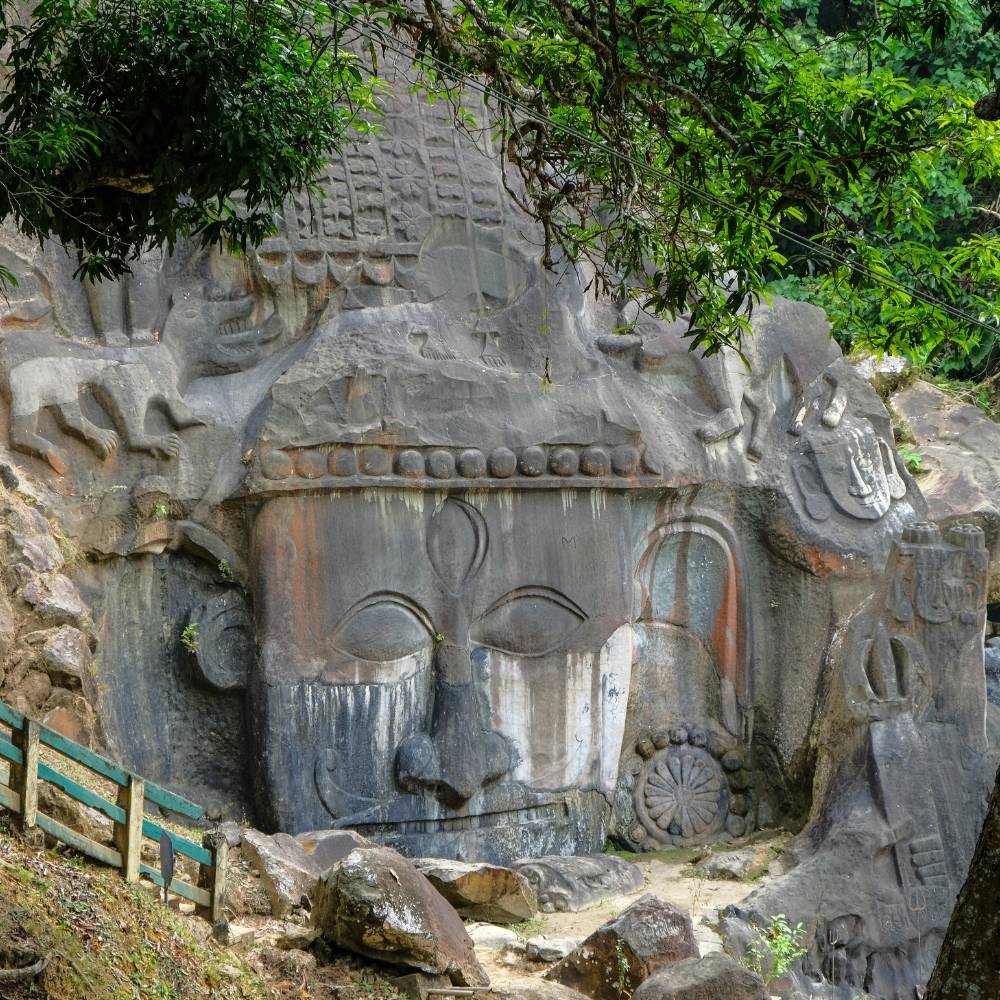
Unakoti is a mesmerizing site in Tripura, famous for its monumental stone carvings dating back to the 7th to 9th centuries. These sculptures, believed to represent Hindu deities, are carved into natural rock and set against a backdrop of lush greenery. The most prominent figure is a colossal representation of Lord Shiva, which has captivated visitors for generations. Despite the surrounding jungle obscuring some of the carvings, Unakoti remains a significant pilgrimage site and a testament to India's rich cultural tapestry.
- Built Year: 7th to 9th Century
- Style: Ancient Stone Carvings
- Material: Stone
Chand Baori, Rajasthan
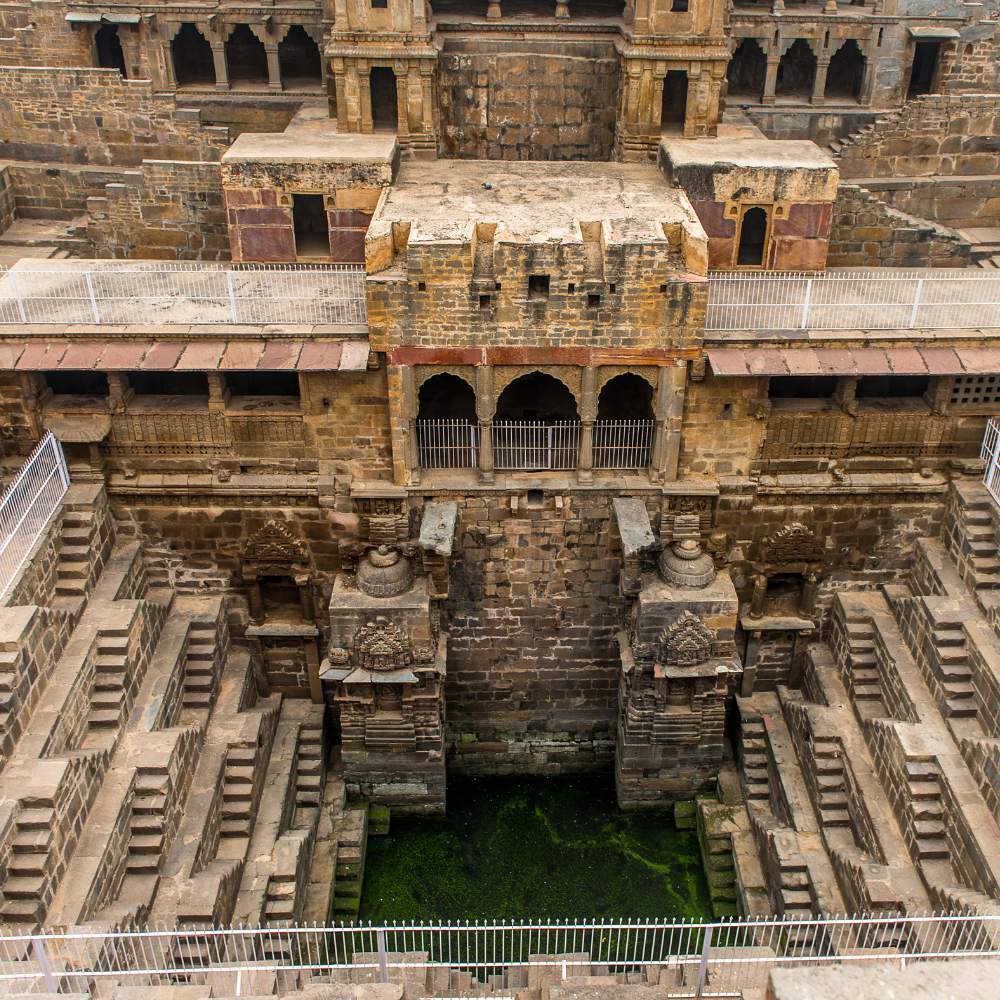
Chand Baori, located in Abhaneri, is one of India's most significant step wells, renowned for its remarkable architecture and deep history. Constructed in the 8th Century, this stepwell descends over 20 meters and features an astonishing 3,500 steps arranged in a geometric pattern. The well served as a water reservoir and a gathering place for locals to escape the harsh Rajasthan heat. The intricate carvings and design reflect the typical Rajasthani style. It is a splendid example of functional architecture merged with beauty.
- Built Year: 8th Century CE
- Style: Rajasthani Architecture
- Material: Stone
Basgo Monastery, Ladakh
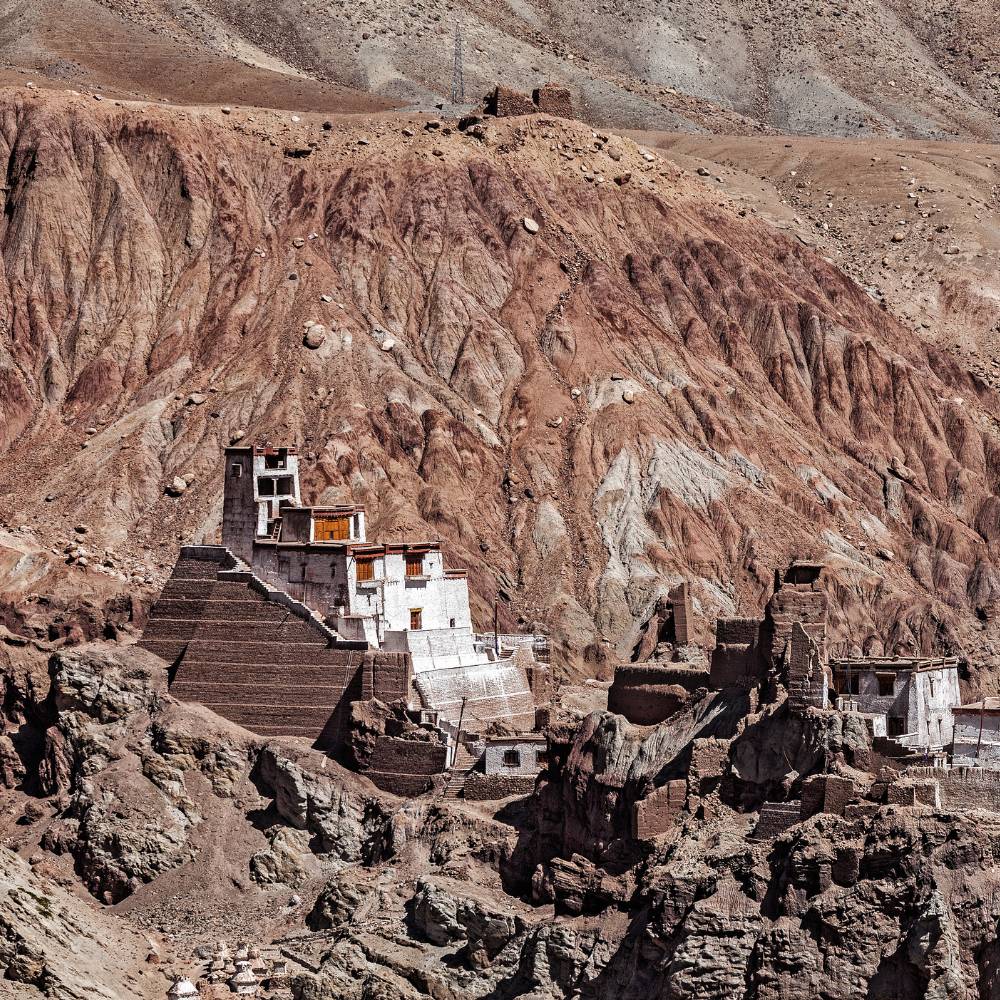
Perched on a hilltop, Basgo Monastery in Ladakh offers stunning views of the surrounding landscape and a glimpse into the region's Buddhist heritage. Built in the 11th Century, this rock-cut monastery served as an essential fort and spiritual center for the locals. Although only remnants of the original structure remain, the intricate murals and statues of Buddhist deities still convey the artistry and devotion of the era. Basgo is a tranquil site, perfect for those seeking peace and a deeper understanding of Ladakh's cultural history.
- Built Year: 11th Century
- Style: Rock-cut Architecture
- Material: Stone
Gwalior Fort, Madhya Pradesh
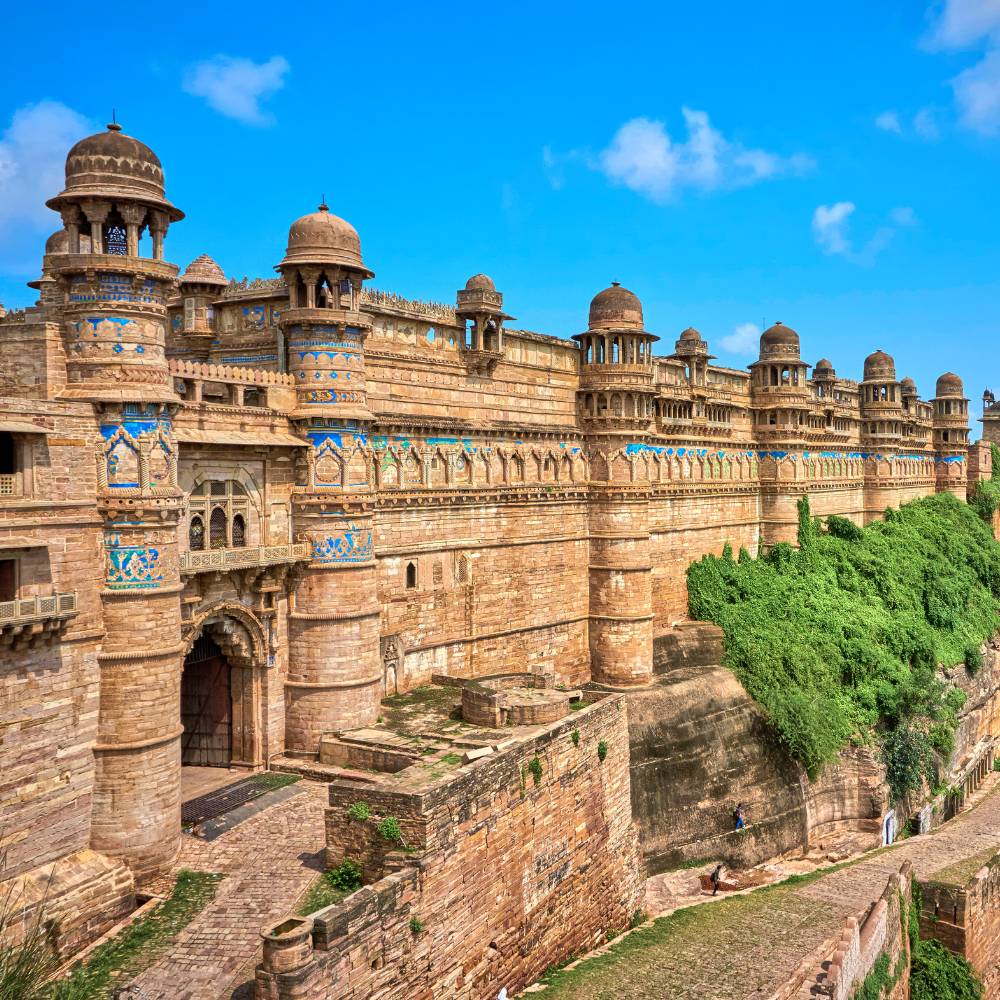
Gwalior Fort is a historic marvel located on a sandstone hill that boasts a rich tapestry of Indian history. This fort has a storied past, serving as a stronghold for several dynasties, including the Tomars and Mughals. Its architecture blends Hindu and Islamic styles with stunning palaces, temples, and intricate carvings. The fort's iconic Man Singh Palace is particularly noteworthy for its beautiful frescoes. Gwalior Fort is not just a monument but a symbol of resilience and artistic brilliance.
- Built Year: 8th Century
- Style: Hindu and Islamic Architecture
- Material: Sandstone
Bhongir Fort, Telangana
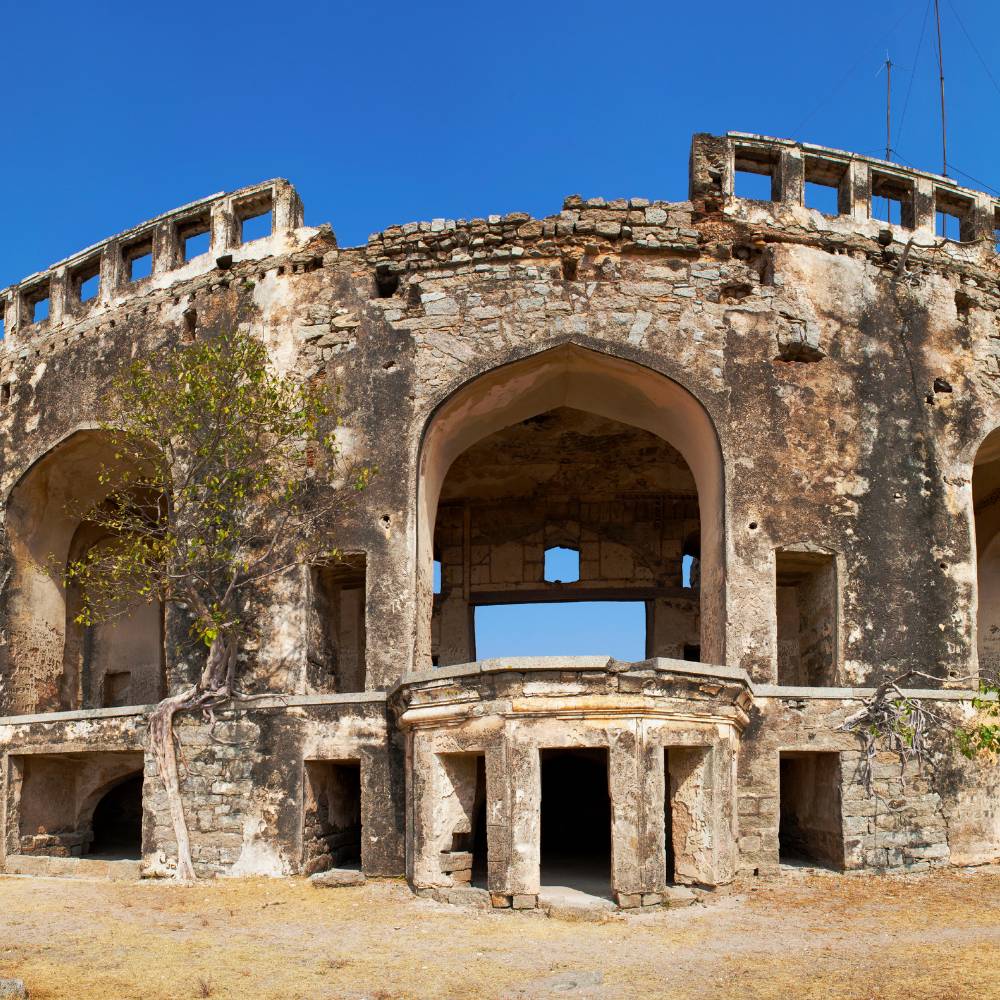
Bhongir Fort, perched atop a granite hill, is a captivating site that showcases the strategic importance of fortification in medieval India. Built during the 12th Century, this fort is renowned for its unique egg-shaped structure and impressive stone carvings. The fort's ruins still whisper stories of battles and royal events, making it an intriguing destination for history buffs. Visitors can trek up to the fort and enjoy panoramic views of the surrounding landscape, adding to its allure as a historical gem.
- Built Year: 12th Century
- Style: Indian Fort Architecture
- Material: Granite
Conclusion
Exploring these fourteen lesser-known historical monuments offers a unique opportunity to delve into India's diverse cultural heritage. Each destination, with its captivating architecture and rich history, provides a glimpse into the artistry and craftsmanship of the past. Each site holds stories waiting to be uncovered, serving as reminders of India's rich and varied history. As you plan your travels, consider venturing off the beaten path to experience these hidden gems. Not only will you witness stunning architecture, but you'll also connect with the enduring legacy of cultures that have shaped this vibrant nation. So, pack your bags and embark on a journey to explore these remarkable monuments that reflect the spirit of India.
